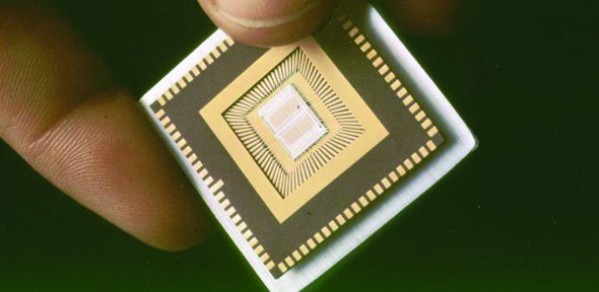
Ranjith Rajasekharan and Aron Rachamim from Electrical Engineering and Justin Pahara and Safwan Akram from the Institute of Biotechnology are winners of the first round of an Innovation Competition run by CamBridgeSens offering awards of up to £5000 to teams of interdisciplinary researchers to make the first steps in putting together or trying out novel ideas in the area of sensor research, ideas that will shape the future of sensing technologies.
Electrical sensors are devices that convert a physical parameter such as room temperature, blood pressure or wind speed into a signal that can be measured electrically. They are used in everyday objects such as touch-sensitive lift buttons and lamps which dim or brighten by touching the base. There are also innumerable applications for sensors of which most people are never aware. Applications include cars, machines, aerospace, medicine, manufacturing and robotics.
From self-parking cars to diagnostic tools for cancer, sensor technology is shaping our future. Indeed, some claim that sensors will change our world in this decade in the way microprocessors did in the 1980s and the Internet in the 1990s. Sensors are big business.
The award winning team summarise their project: "We propose a novel sensory technology to detect light using proteins integrated with suitable conducting micro- and nano-structures. Presently, commonly used sensory technologies rely on non-biological components as these are more predictable and can be reproduced easily. Although using biological components is a challenge, the potential advantages are that they have higher sensitivity and specificity.
"Use of high quality micro- and nano-structures as electrodes will allow us to fully exploit the potential for increased sensitivity of these protein sensors because of their small size and high surface to volume ratio. There is a ready made market for photo-detection technology in products from mobile phones to digital cameras to solar panels, enhancing sensitivity in photon detection, will improve the quality of these products.
"By implementing protein-based photon absorption, we can potentially decrease pixel sizes to nano meter range which is far less than the current 6 x 6 µm pixels. The protein that we are using is capable of harnessing light and converting that energy to electron movement. Similarly, using the same electrode design but with different protein species, we can begin to image chemical reactions in two dimensions on electrodes. The proposed project is to generate truly novel sensory technology, which when successful, can also be used to generate clean energy. In this technology we are essentially harvesting electrons from proteins in order to "sense" our environment, perhaps by optimizing and increasing the size of the device we can harness large amount of electrons very efficiently and thus use this technology for renewable energy.
Ranjith Rajasekharan is under the supervision of Dr Tim Wilkinson, CMMPE, Aron Rachamim is under the supervision of Dr Andrew Flewitt EDM all from Electrical Engineering and Justin Pahara and Safwan Akram are under the supervision of Professor E.A.H. Hall all from the Institute of Biotechnology.

